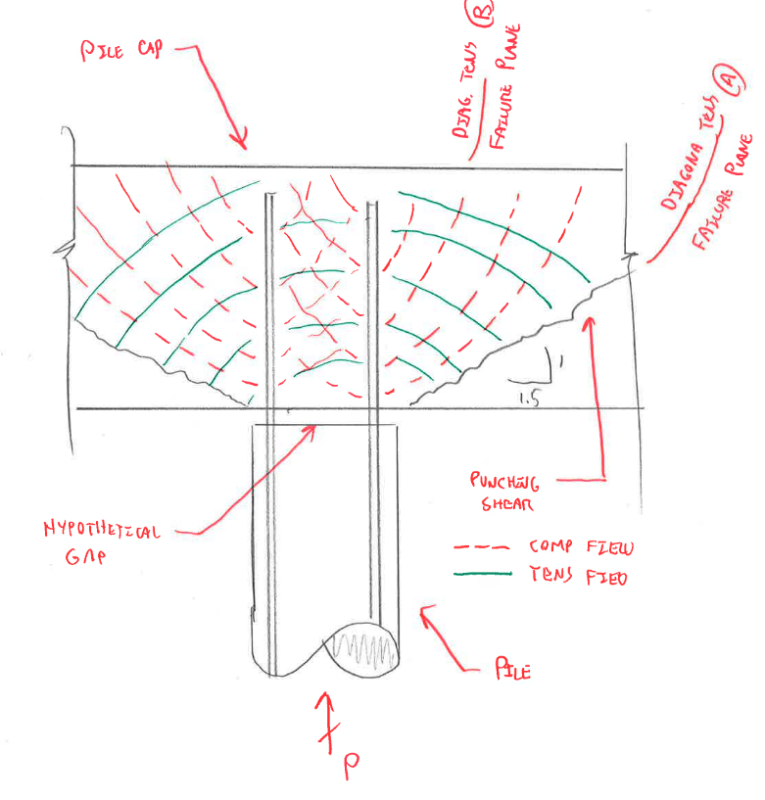Cougar_15
Structural
- Feb 8, 2022
- 2
Hi All,
I currently have a 16" pipe pile coming in to a 6' deep pile cap with the bottom reinforcement placed on top of the imbedded pile (See attached for sketch). This pile will see mostly compression and tension loads. I am thinking about running the pile reinforcement as close as possible to the top layer of reinforcement in order to better engage the top mat for bending. I am hesitant to do this because I still want my compression load to be transferred on the outside of the bottom mat and not potentially transferred through the bars in compression to a deeper location in the mat. Ideally, the concrete filled pipe will take all of the vertical load through bearing. If the compression is transferred to a deeper location in the cap it would seem that my punching shear checks would need to have a closer look to ensure I am using an appropriate concrete thickness to resist the shear. Any thoughts or discussion is always appreciated !!!
I currently have a 16" pipe pile coming in to a 6' deep pile cap with the bottom reinforcement placed on top of the imbedded pile (See attached for sketch). This pile will see mostly compression and tension loads. I am thinking about running the pile reinforcement as close as possible to the top layer of reinforcement in order to better engage the top mat for bending. I am hesitant to do this because I still want my compression load to be transferred on the outside of the bottom mat and not potentially transferred through the bars in compression to a deeper location in the mat. Ideally, the concrete filled pipe will take all of the vertical load through bearing. If the compression is transferred to a deeper location in the cap it would seem that my punching shear checks would need to have a closer look to ensure I am using an appropriate concrete thickness to resist the shear. Any thoughts or discussion is always appreciated !!!

